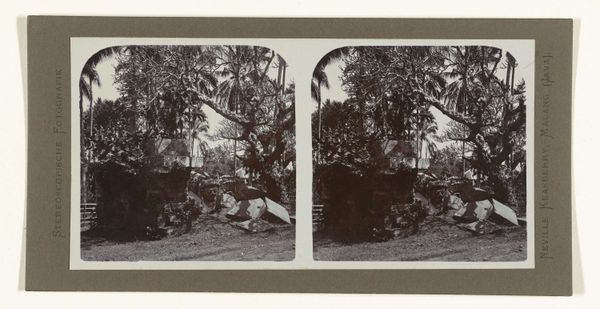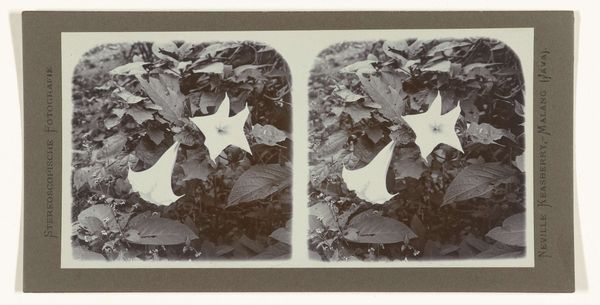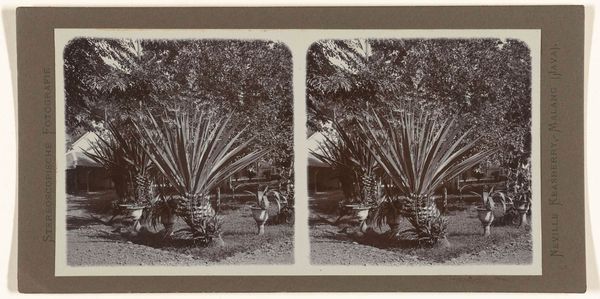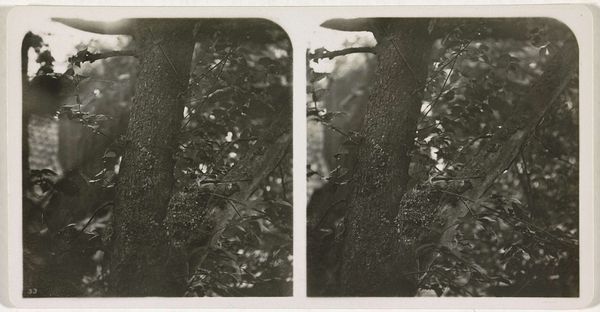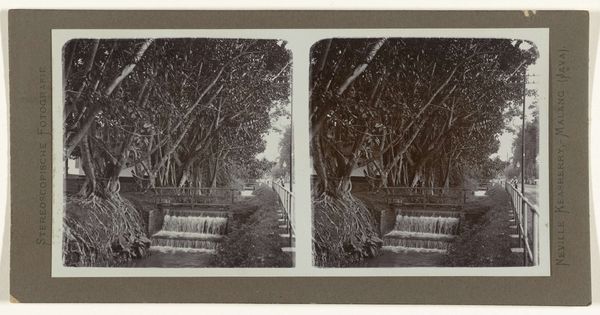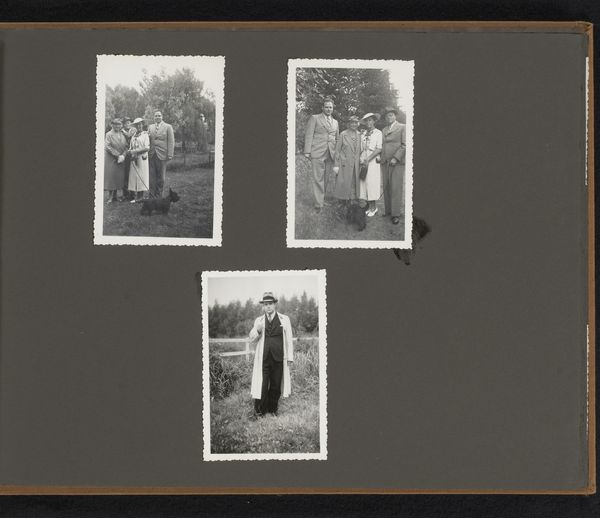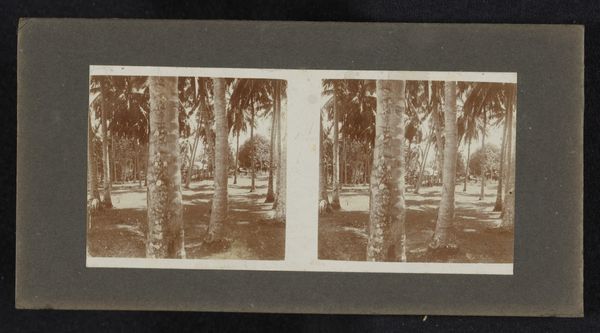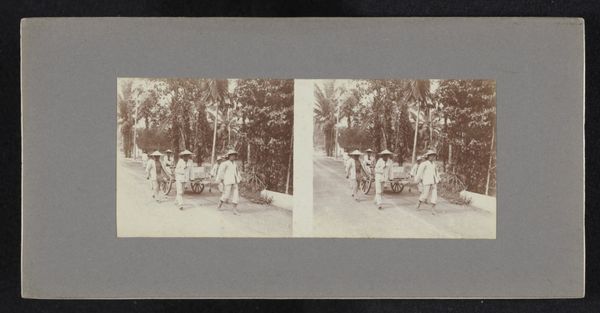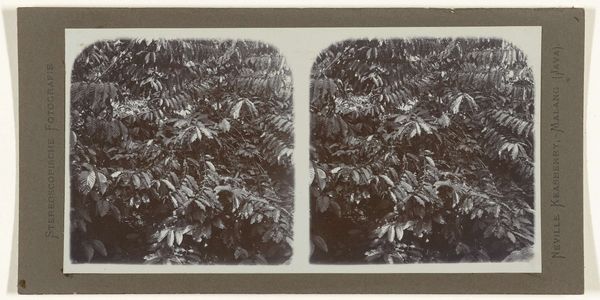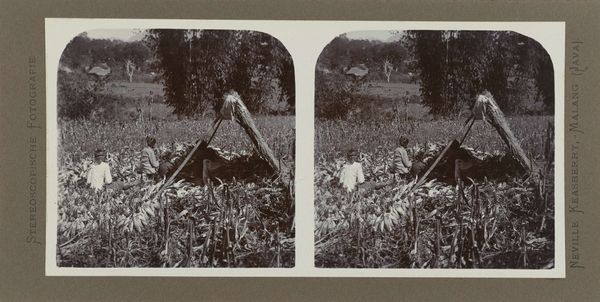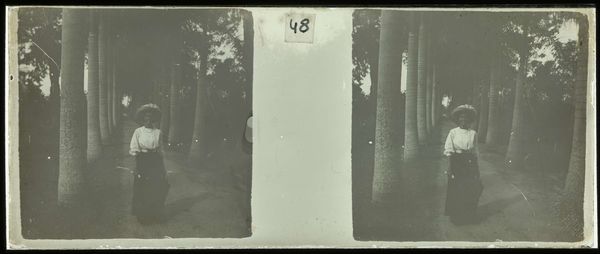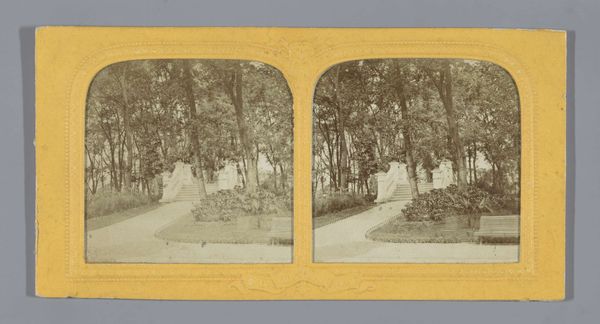
print, photography
#
portrait
#
african-art
# print
#
landscape
#
photography
Dimensions: height 76 mm, width 152 mm
Copyright: Rijks Museum: Open Domain
Curator: Wow, what a study in contrasts! This stereo photograph, titled "Portret van een Javaanse vrouw naast een bewerkte rubberboom," dating from between 1900 and 1935 by Neville Keasberry, presents such stark clarity. It’s immediately striking, isn’t it? Editor: It is. The high contrast kind of flattens the depth, emphasizing the surface textures—look at the grooves on that rubber tree, it is like a sculpture created through labor. The woman's elaborate textiles in sharp monochrome, the marks are both aesthetic and so thoroughly practical, the very sign of commodity. Curator: Absolutely. The whole composition hums with this strange harmony, but also the deeper dissonance of colonialism I think. The woman herself, posed so formally against this tree that literally exudes profit. There’s an element of staged anthropology here. Almost a flattening effect on identity by turning people into commodity in some ways. The photograph romanticizes, but also…well, silences. Editor: Silence, yes, but also highlights the materiality and conditions of labor directly. We see rubber, we can almost feel it; smell the latex. The method for extracting, the woman posed beside the tree she depends on. These materials were essential to industry in Europe at that time. I wonder if that rubber reached as far as Detroit to line the wheels of cars that revolutionized transportation? How those worlds became entangled through colonial extraction. Curator: And her presence--this particular woman amidst this context. Her intricate batik dress, an art form passed down through generations and presented alongside the most pragmatic face of exploitation in material form—strikes me. Did she have a say in how she was presented here? Was this her job to show rubber tapping techniques? Or simply to 'authenticate' the scene for distant viewers, that other purpose. Editor: I agree with the feeling that she is included as almost part of the process. I would imagine, she would probably see things another way and it is important that her point of view would be represented as more that the material aspect that the photo can highlight, as important as they are. Curator: This picture truly gives us layers that prompt deeper thought and invites reflection, not least about who shapes narratives and controls the view presented through material constraints. I will ponder the depth we uncovered, really, an industrial landscape juxtaposed against complex artistry... Editor: ...while I focus my vision to the process and the hard materials this photograph present for us. Thank you!
Comments
No comments
Be the first to comment and join the conversation on the ultimate creative platform.
